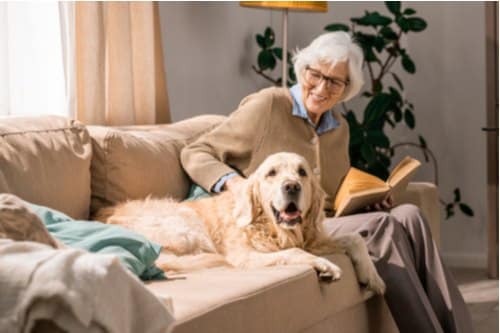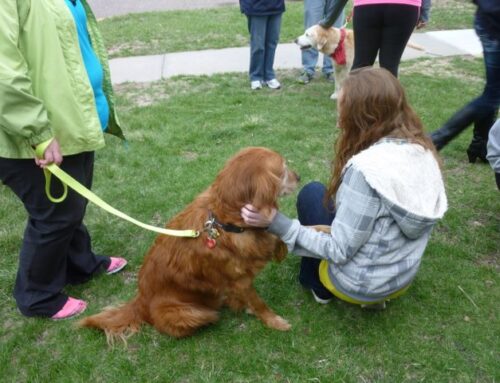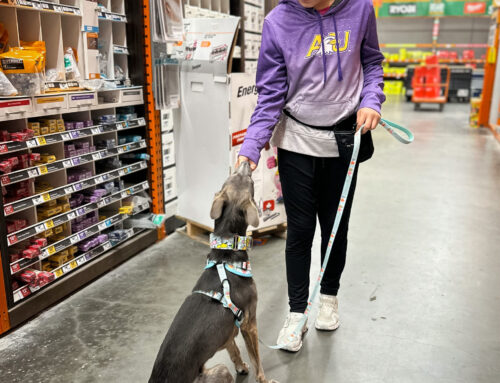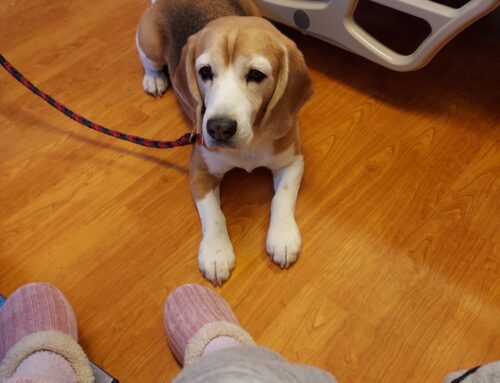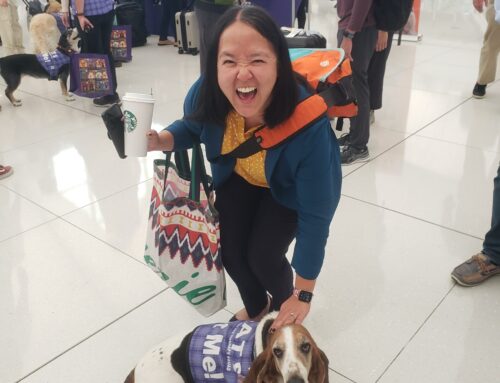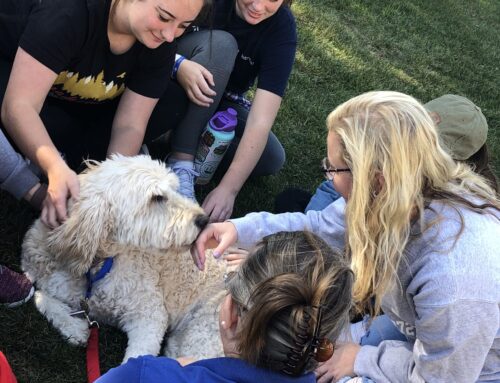As dogs get older, their needs change. Making your dog more comfortable in her later years involves paying attention to these changing needs. Having a dog is a pleasure, and your furry friend will be loyal, keeping you company, creating many exciting and enjoyable moments. However, there are certain downsides to having a dog, and watching them grow old is one of them.
By age seven, most dogs begin showing signs of aging like weight gain and dulled senses; larger dog breeds sooner than that. Most pet parents are mindful, alert to behavioral and other changes in their dogs, and will notice the hints as to what their pets need.
Listen to What Your Senior Dog Is Telling You
The experts at Alliance of Therapy Dogs work with dogs of various breeds and know the signs to look out for. We are very aware of what our therapy dogs need and care for them well. Here is some helpful information from our experts on some things that your senior dog would like to tell you if they could talk:
1. “I can’t see or hear very well any longer.”
When their dog ages, many pet parents feel he is ignoring them. However, the fact is that he may be hard of hearing and doesn’t hear you calling him. At times, your dog might not see the ball you have thrown right before him. Most people do not notice these vision or hearing loss signs in their dogs until they become severe.
Sometimes, you may notice your dog getting aggressive if someone approaches them and touches them. If the dog has not seen them coming, he may become defensive or aggressive. In some cases, it is because you touched an area that was sensitive or with arthritic pain.
The best way to prepare your dog for a smooth transition to eventual deafness is to use hand signals with them early. Once they recognize your hand signals, verbal cues don’t matter when you instruct them to do something. Many canines with hearing problems are still able to detect vibration. Therefore, you can catch their attention by clapping your hands or using noise-making strategies like knocking on wood or any hard surface.
If you know that your dog has vision loss, it’s a good idea to make movement within your home easier for them. You can do this by:
• Removing clutter from the floors in all the rooms
• Spraying various scents on rugs, so they recognize which room they are in
• Using rugs or carpets with varying textures
• Blocking off potentially dangerous areas like the swimming pool etc.
• Keeping all familiar things like their food and water bowls in the same place
• Not moving furniture around- it will only confuse them
2. “I get a little more anxious these days.’
Senior dogs aren’t able to handle stress very well. Many situations that weren’t stressful earlier become so; some of these include:
• Separation from you even for a short while
• Visitors in your home
• Sensitivity to sounds that were part of their immediate surroundings
• Interactions with new dogs
Some dogs become more agitated and irritable than usual as they age, while others become clingy or prefer solitude. A large portion of these behaviors or reactions can be attributed to increased pain or dulled senses. You need to check whether any medical issues are making them stressed and anxious.
When you feel your dog is too anxious or aggressive, take her to your vet immediately, and get a complete examination done to rule out any underlying medical issues for these symptoms. If your vet does not find anything medically wrong in your dog, you can do certain things to help reduce their anxiety, such as:
• Play games
• Use food puzzles
• Take frequent short walks
• Maintain a consistent routine
• Allow extra space when you have visitors in your home
• Continue working with separation training
• Be patient, as any impatience you display can make your dog more anxious
3. “I get cold very quickly now.”
Pet parents with older dogs will notice their furry friends like warm and cozy beds. There is a reason for this. When dogs become more senior, they are unable to regulate their body temperature quickly. You will notice that your dog that loved playing catch in an open yard on even the chilliest days now prefers staying indoors with even the slightest nip in the air.
You can help minimize her muscle and joint stiffness by helping her maintain her body temperature. It can help keep illnesses at bay because her body will not struggle to stay warm. You can purchase a light sweater for your dog, which will help him stay warm on walks. When he is indoors, you can keep his bed closer to the heater or fireplace. Placing a heating pad made explicitly for pets in his bed is another way to keep him warm.
4. “My joints hurt, and I can’t move as well as I used to.”
Joint pain and arthritis are common problems in aging dogs. Sometimes, old injuries flare up, or their bones become more arthritic over the years. Joint pain can make it difficult for your dog to move around the house during wintertime, walk down the stairs or get into the car. Some things to do include:
• Check with your vet about starting your dog on some supplements early
• If the pain is severe, the vet may prescribe anti-inflammatory pain relievers
• Switch regular food and water dishes with elevated ones
• Get an orthopedic bed for him
• Take frequent short walks
• Install ramps in your home
• Do not call him unless necessary
Apart from these things, aging dogs also lose their appetite, forget old rules, and get confused sometimes. They may also experience changes in nails, skin, coat, gums, and teeth. Caring for your dog in her old age has its rewards, and you know that you are doing everything possible for a faithful companion.
For information on our services, please call Alliance of Therapy Dogs at 307-432-0272 or
877-843-7364. You can also send us an email through this Contact Us form.

